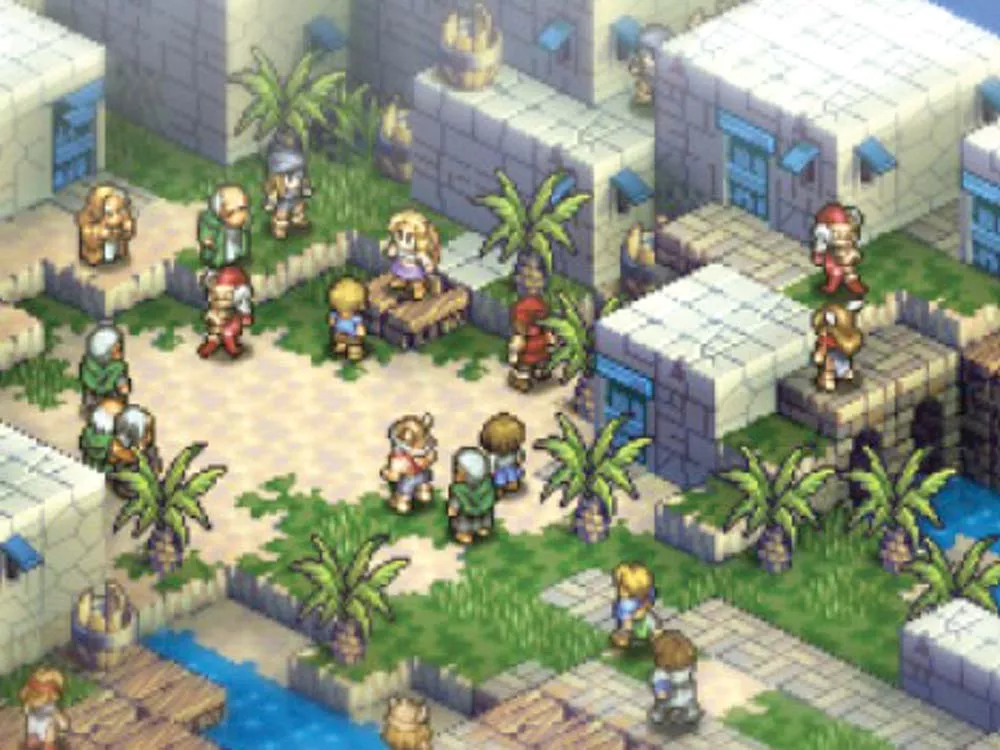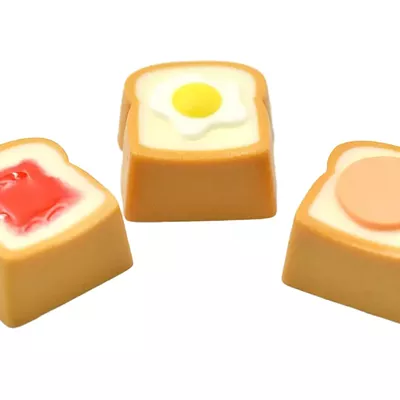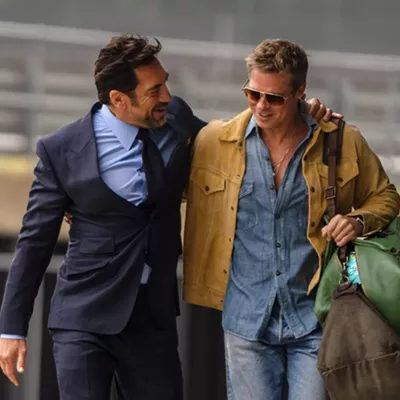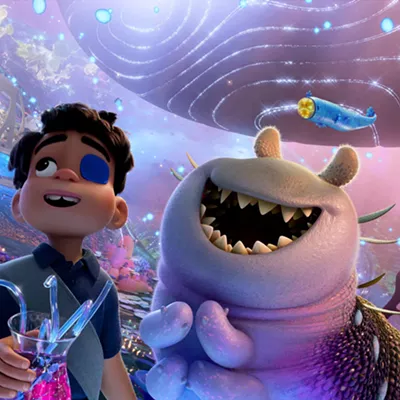Begin in the middle. That is what the poet Horace advised storytellers to do. Jump right into the messiest part of the tale. The designers of Tactics Ogre: Let Us Cling Together took that advice literally. The game begins in Valeria, a kingdom recently divided between two warring factions. This would be standard, blackvs.-white fare except that there were originally three factions fighting for Valeria. The third, forgotten faction is at the heart of the story of Let Us Cling Together as they attempt to reassert their resistance. Got all that?
The history lesson is a classic part of the Tactics Ogre series. Like Tolstoy in War and Peace, the creators of Let Us Cling Together are aiming to tell a grand, multi-leveled tale. They want to tell the stories of individuals caught up in the sweep of history. Of nations and families. And they do this by interspersing long-winded storytelling with remarkably strategic battles.
The battles are the heart of Let Us Cling Together. They resemble other turn-based tactical games in that the characters face each other across a chessboard-like battleground. Turn by turn, they hop up and around the squared-off landscape as they attack, cast spells and attempt to outmaneuver each other.
What distinguishes Let Us Cling Together is that the various characters on the battlefield must cling together as a unit instead of developing as individuals. On the battlefield, if two high-level soldiers are joined by a new recruit, the new recruit automatically advances in level to meet the experienced soldiers.
This system makes Let Us Cling Together a game about army management—building large, synchronized forces. This is a good way to tell the story of a mounting rebellion, but it loses the personal tales that make those stories interesting. Without individual units to develop in battle, there are no characters to care about deeply. The battles are spectacular and ingenious. But the characters get lost in the middle.
THE GOOD: Every so often, when I’m playing a game and I make a big mistake, I’ll consider switching the power off before the game can record my stupidity into its memory banks. Goof-up forgotten. Error erased. And I admit that I’ve done that occasionally. And I feel guilty — like I’m cheating. So my conscience is relieved by the Chariot Tarot — a command in Let Us Cling Together that lets me reverse a turn in battle. I can undo the mistakes I didn’t mean to make. I can try a different attack and see how the game responds. And it’s all fair and legal — conscience clean.
THE BAD: The Tactics Ogre games have always told their stories by staging scenes on tiny little action-figure play-sets. The characters look as small as they do on the battlefield, but they stand with even less animation. And they talk, talk, talk, occasionally moving to another place and talking, talking, talking. There’s nothing attractive or interesting about watching these teensy dramas while the majority of the PSP’s widescreen sits black and unused.
THE BOTTOM LINE: Tight tactics make up for loose dramatics in Tactics Ogre: Let Us Cling Together.


















